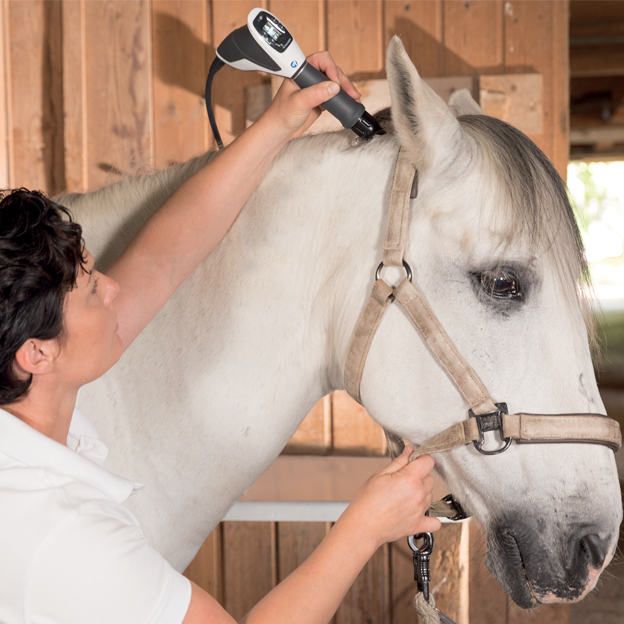Evaluating the Performance of Laser Therapy in Horse Treatment for Injury Recovery
The assessment of laser treatment's effectiveness in equine injury rehab rests on several factors, including healing time, discomfort mitigation, and cells regrowth. Medical researches suggest noteworthy improvements in problems like tendonitis and osteoarthritis, associated to boosted cellular feature and raised ATP production. Veterinarians regularly observe superior results with laser treatment contrasted to conventional techniques, placing it as an essential aspect in equine treatment. The requirement for continuous tracking and tailored treatment plans can not be overemphasized. What certain professional proof sustains these insurance claims, and just how do vets apply these methods in technique?
Understanding Laser Treatment
Laser treatment has ended up being a critical tool in vet medication, especially in the treatment of equine problems. Recognized for its non-invasive nature and effectiveness, laser therapy involves the application of specific wavelengths of light to boost cells repair work and decrease swelling. This restorative technique is increasingly preferred for its capacity to speed up the healing procedure in equines experiencing a variety of bone and joint injuries and persistent conditions.
The primary system behind laser therapy is its capability to enhance cellular features. When laser light permeates the skin, it is soaked up by mitochondria, the powerhouse of cells, which leads to boosted production of adenosine triphosphate (ATP) This biochemical power boost assists in mobile repair work and regrowth. Additionally, laser treatment advertises vasodilation, improving blood flow and oxygen distribution to damaged cells, hence accelerating recuperation.
In equine medicine, laser therapy is particularly helpful for problems such as tendonitis, osteoarthritis, and injury recovery. The technique is lauded for its pain-relieving homes, permitting steeds to regain wheelchair and feature more rapidly. Veterinarians likewise value its marginal adverse effects contrasted to various other treatment techniques, making it a dependable and risk-free alternative for equine care.

How Laser Therapy Works

Upon absorption, these photons trigger a collection of biochemical modifications, improving mitochondrial function and bring about raised adenosine triphosphate (ATP) production. This rise in ATP increases mobile metabolism, advertising cells repair work and regeneration. In addition, laser therapy regulates inflammatory actions by affecting cytokine degrees and minimizing oxidative tension, thereby alleviating discomfort and swelling.
Another substantial element of laser therapy is its role in improving microcirculation. The treatment advertises vasodilation, boosting blood circulation and oxygen distribution to broken tissues (Equine Therapy). This assists in the elimination of mobile particles and supports the spreading of fibroblasts and collagen synthesis, vital for wound recovery
Clinical Evidence
The efficacy of laser therapy in equine therapy has been confirmed through different professional research studies, showcasing its healing potential throughout an array of pop over to this web-site conditions. A number of regulated trials and empirical researches have documented substantial improvements in tissue repair service, discomfort reduction, and general recovery timelines. For example, a study carried out by Turner et al. (2012) showed that horses treated with low-level laser therapy (LLLT) for ligament injuries showed accelerated healing compared to those getting standard therapies. The research highlighted a marked reduction in inflammation and enhanced collagen formation.
Likewise, research by Johnson and coworkers (2015) focused on equine muscular tissue injuries, disclosing that laser therapy significantly accelerated muscle fiber regrowth and decreased muscular tissue tightness. Clinical analyses have revealed that laser therapy can relieve chronic conditions such as osteo arthritis.
Veterinarian Insights

Veterinarians also value the adaptability of laser therapy. She points out that laser therapy can be customized to the details requirements of each equine, guaranteeing optimal end results.
Additionally, veterinarians value the ability to incorporate laser treatment with other therapy methods. This multimodal method can enhance total therapy effectiveness, providing a comprehensive remedy for equine rehab. Such endorsements from skilled experts underscore the expanding acceptance and application of laser therapy in equine medication.
Practical Considerations
A key facet of executing laser therapy in equine therapy involves understanding the functional considerations that ensure its efficiency and security. Most importantly, it is crucial to pick the suitable laser tool, as different types vary in wavelength, power, and penetration depth. Equine Therapy. Vets should be fluent in these parameters to customize therapy protocols properly to each injury kind
Moreover, the regularity and period of laser treatment sessions require cautious preparation to take full advantage of therapeutic benefits while decreasing any type of possible adverse results. Consistent tracking of the horse's reaction to therapy can lead necessary modifications in the treatment regimen. Establishing a risk-free and regulated environment during therapies is also visit the site vital to prevent unexpected direct exposure to laser emissions, which might damage both the horse and the handler.
Training and qualification of personnel providing laser treatment are critical to make sure correct strategy and to copyright security requirements. In addition, keeping exact documents of each session, consisting of laser setups and observed end results, is vital for evaluating the overall effectiveness of the treatment and for making data-driven decisions.
Conclusion
Laser therapy the original source has actually emerged as an effective method in equine injury rehab, offering significant benefits in recovery time, discomfort relief, and cells healing. For optimum results, continual tracking and individualized therapy protocols continue to be vital in leveraging the full capacity of laser treatment in equine care.